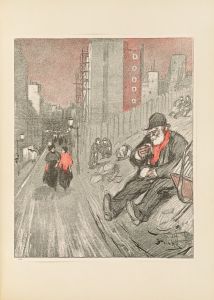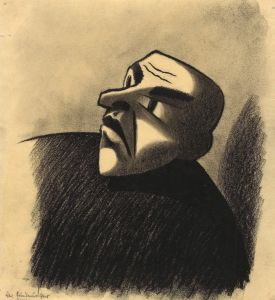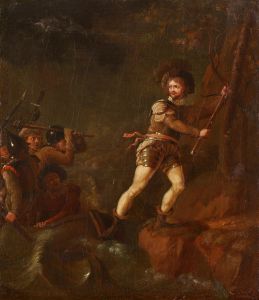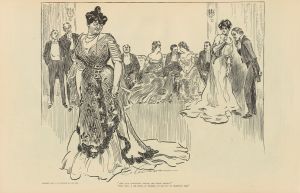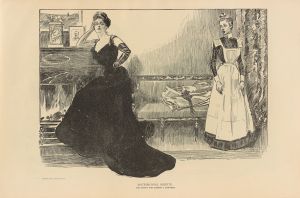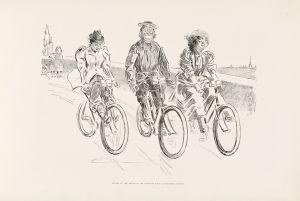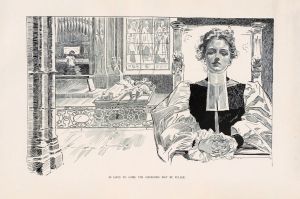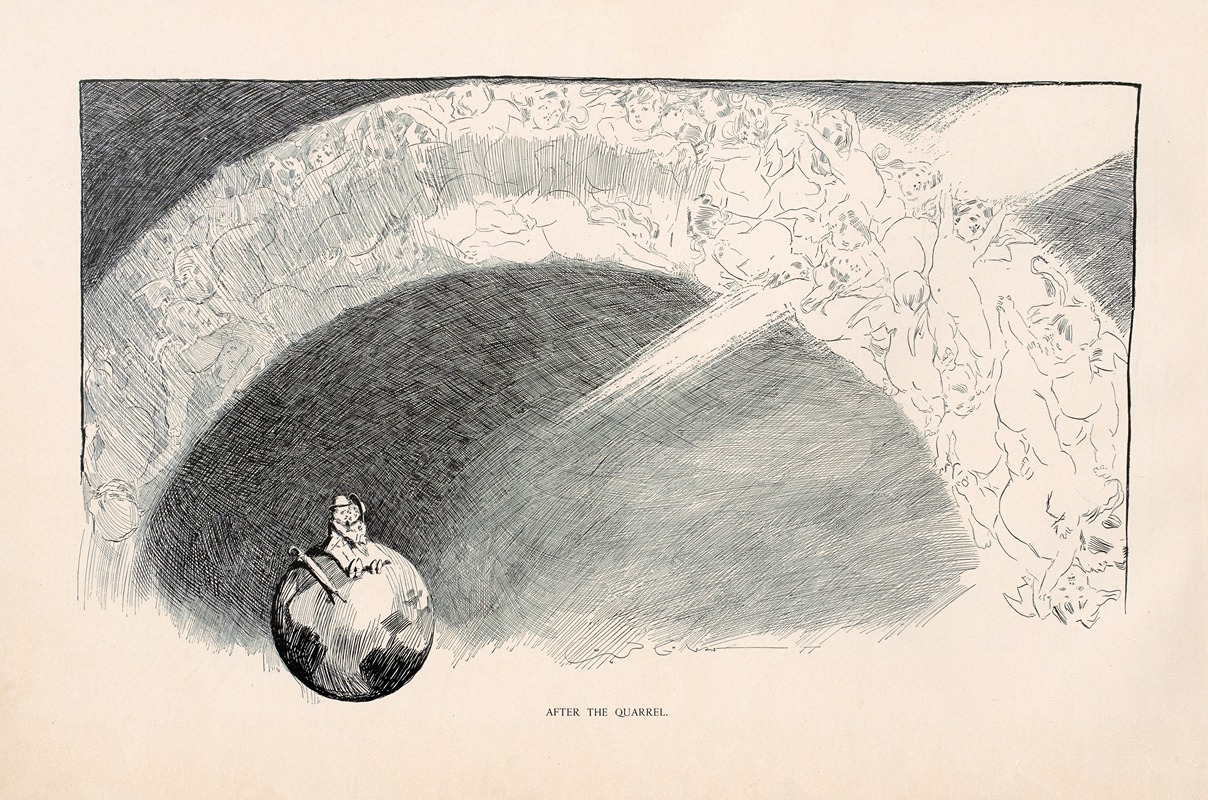
After the quarrel
A hand-painted replica of Charles Dana Gibson’s masterpiece After the quarrel, meticulously crafted by professional artists to capture the true essence of the original. Each piece is created with museum-quality canvas and rare mineral pigments, carefully painted by experienced artists with delicate brushstrokes and rich, layered colors to perfectly recreate the texture of the original artwork. Unlike machine-printed reproductions, this hand-painted version brings the painting to life, infused with the artist’s emotions and skill in every stroke. Whether for personal collection or home decoration, it instantly elevates the artistic atmosphere of any space.
Charles Dana Gibson was an influential American illustrator best known for his creation of the "Gibson Girl," an iconic representation of the American woman at the turn of the 20th century. His illustrations captured the spirit and social dynamics of his time, often with a touch of humor and satire. One of his notable works is "After the Quarrel," which, like many of his pieces, reflects the social norms and gender roles of the era.
"After the Quarrel" is a black-and-white illustration that showcases Gibson's signature style, characterized by detailed pen-and-ink drawings. The artwork typically depicts a scene involving a man and a woman, capturing a moment of reconciliation or contemplation following a disagreement. This theme of romantic tension and resolution was a common subject in Gibson's work, as it resonated with the societal expectations and personal relationships of the time.
Gibson's illustrations were widely published in popular magazines such as Life, Harper's Weekly, and Scribner's, reaching a broad audience and influencing public perceptions of gender roles. The "Gibson Girl" became a cultural icon, embodying the idealized image of beauty, independence, and confidence. She was often portrayed as a strong, intelligent woman who could hold her own in social situations, yet still adhered to the traditional feminine ideals of the period.
In "After the Quarrel," Gibson's attention to detail and ability to convey emotion through expression and posture are evident. The characters in the illustration are typically dressed in the fashion of the early 1900s, with the woman often depicted in a flowing dress and the man in a suit. The setting is usually a domestic or social environment, providing a backdrop that emphasizes the personal nature of the scene.
Gibson's work, including "After the Quarrel," played a significant role in shaping the visual culture of the early 20th century. His illustrations not only entertained but also offered commentary on the evolving roles of men and women in society. By capturing the nuances of interpersonal relationships, Gibson's art provided a mirror to the changing dynamics of his time.
While specific details about the creation and publication of "After the Quarrel" may not be extensively documented, the piece remains an example of Gibson's ability to blend artistry with social commentary. His legacy as an illustrator endures, with his work continuing to be studied and appreciated for its artistic merit and cultural significance.





